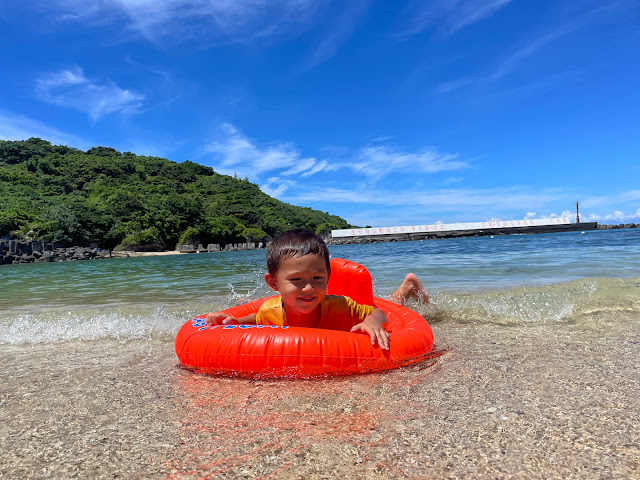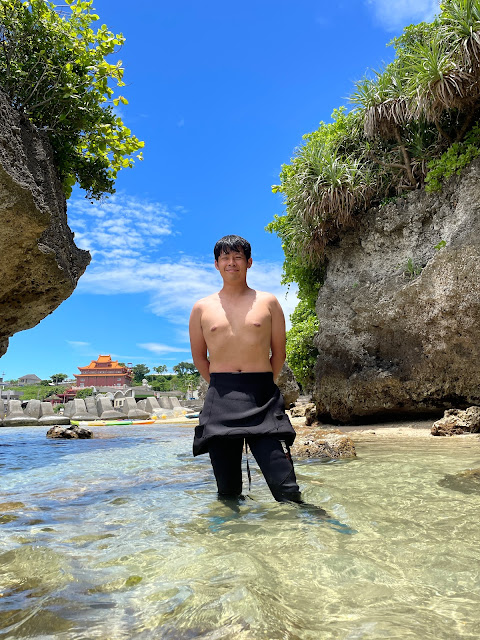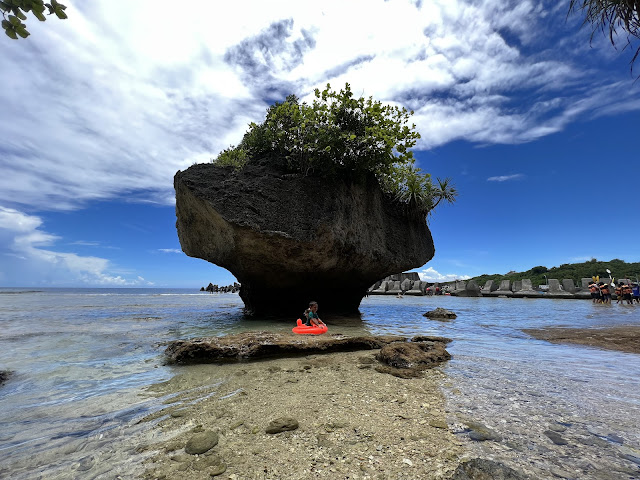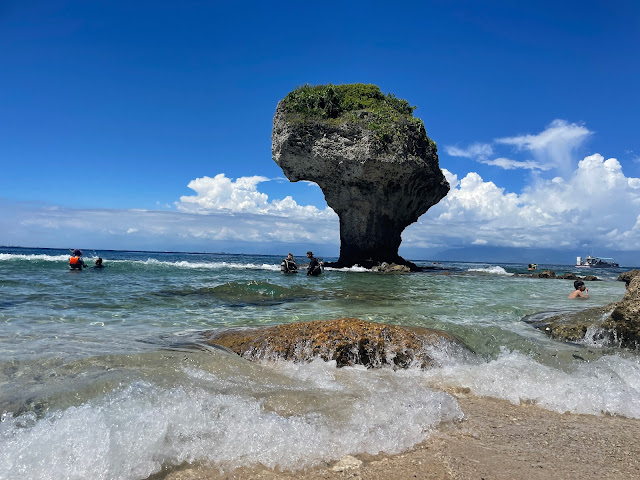There are several beaches to visit on the island. We mainly spent our time playing next to Shanfu Fishing Harbour, which seemed to have the calmest waters. Many people come here to swim, play SUP, snorkel, and engage in other activities, but these activities are also popular in other places on the island. We arrived on Thursday, and there weren't many people, but on Friday, this small harbour was crowded with people!
Despite already having a bad sunburn, I didn't want to give up playing in the water during our short 2-day visit. On the first day, we were lucky to spot a really big sea turtle in the harbour, and thanks to our GoPro, we were able to record it. We mostly swam with inflatable equipment, but I was a bit worried about it losing air suddenly or me falling off. We traveled from one beach to another using the inflatable equipment. It's better to have a life jacket and not worry about anything! It was actually my first time experiencing the underwater world, so I was pretty excited. It was amazing to see the sea turtle swimming right below me. There were many colorful fish, coral, sea urchins, and even a sea snake!
What is XiaoLiuqiu?
Xiaoliuqiu is one of Taiwan's largest coral islands and the only one with a significant population and human activities. The island is covered with limestone and land colored red due to weathered iron oxide and silicon oxide. Its beaches, reefs, caves, and eroded rock formations have become tourist attractions. The island's notable caves include Black Dwarf Cave, Beauty Cave, and Lobster Cave. The most famous rocks are Vase Rock at the north end of the island, the Sanfu Ecological Park on the east coast, and the Houshi Fringing Reef in the southeast, which includes Rat Rock, Guanyin Rock, Indian Rock, and Climbing Tiger Rock.
Xiaoliuqiu has a diverse ecosystem. Its waters are home to approximately 176 species of fish and numerous coral species. The island is also a habitat for young and adult green sea turtles, with adult females coming ashore to nest during the summer months. Marine vertebrates such as sharks, flying fish, sea turtles, and cetaceans like sperm whales may appear around the island.
Fishing has traditionally been the mainstay of the local economy, with most residents making their living from it. However, the better-paying catering industry has caused a shortage of manpower in the fishing industry. Due to the lack of rivers on the island and infertile ground, farming is challenging. In the past, the main products came from local coconut palms. After 1945, the island's farmers shifted their focus to sweet potatoes and peanuts. Presently, the island's 140 hectares of farmland are used for cultivating mangoes and other fruits such as papayas, guavas, and rose apples.
































0 komentarze:
Post a Comment